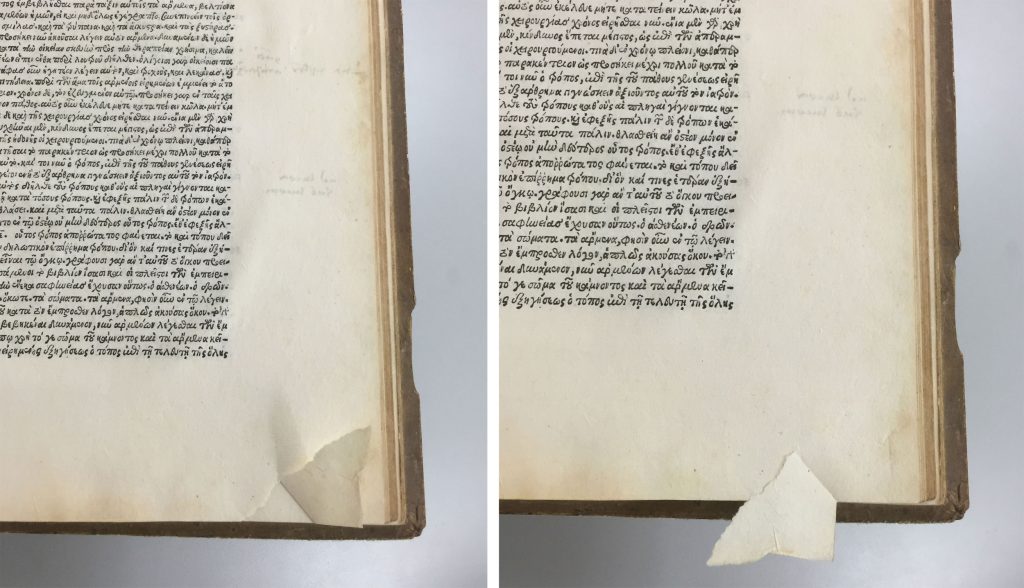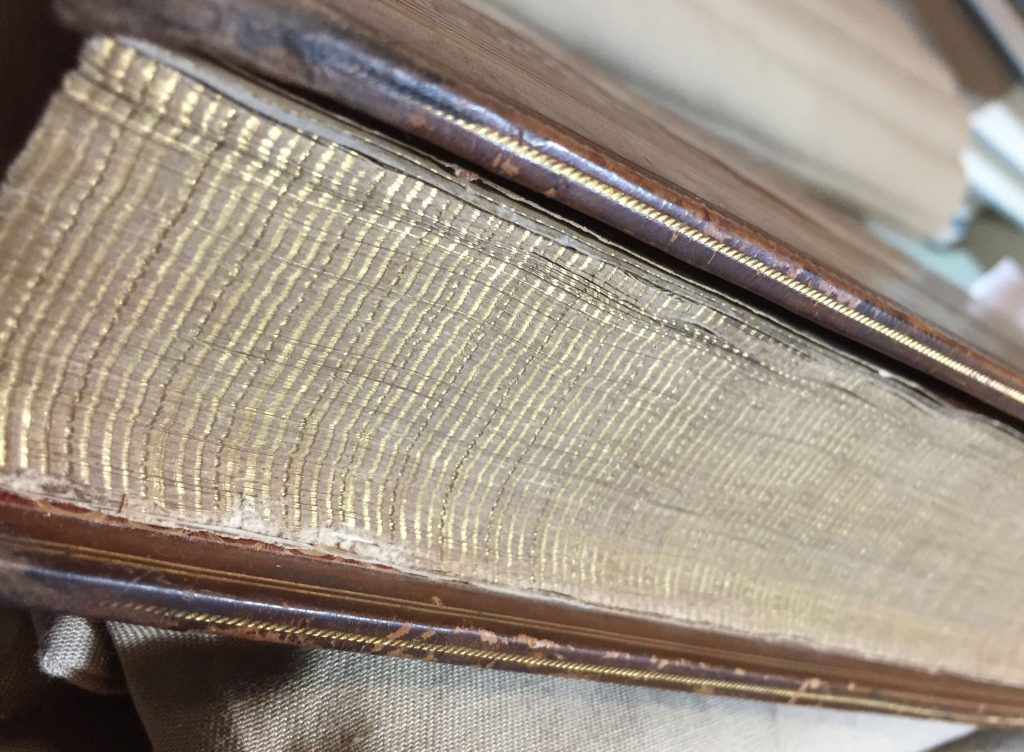The treatment and decoration of book edges vary greatly depending upon the time period or style of binding. The edges of a textblock can sometimes reveal information about how the book was assembled or used over the years. I came across an example of this the other day in a 16th century printed volume with this small tear and flap of paper.
It appears that this little piece was torn and folded back before the edges of the textblock were trimmed down. When unfolded, you can get an idea of how much of the sheet was cut off that edge by the bookbinder’s plow.
There are a number of reasons why a binder might trim the edges of a textblock. For one, the edges of a sheet of handmade paper naturally have a kind of feathery undulation to them from the wooden mold used to make the sheet. These are known as a deckle edge and the image below illustrates the difference between a cut edge (left) and the natural edge (bottom) on a piece of modern handmade paper.
When a number of deckle edges are assembled together in a binding, they form a very rough, uneven textblock edge. This can allow dust to filter into the textblock and can’t be elaborately decorated like this example of a gauffered edge.
Book collectors may prefer a deckle edge on a binding, however, because it demonstrates that the paper has not been overly trimmed. Sometimes one will find just a few uncut edges within the textblock. This can be an example of what is called “proof” or “witness” (Zaehnsdorf, 1900, p. 178), demonstrating that the edges have been trimmed as little as possible to achieve the smooth textblock edge.
I’ve noticed that most of the modern hardback case bindings we are acquiring for our circulating collection come with an untrimmed fore-edge. It does imitate the deckle edge of older books, but I suspect that its popularity is primarily driven by cost-cutting measures from printers, rather than aesthetic reasons.
Unfortunately, it was historically common practice to re-trim the edges of a texblock during rebinding. Books that have been rebound many times may be significantly smaller with no remaining margin or even some missing text, like this poor bound serial.

I should close with the disclaimer that no book edges are harmed as part of our modern conservation efforts. The treatment of an edge can tell us a great deal about how a book was prepared or repaired, so we make every effort not to alter or obscure that evidence through repairs or treatment.
Etherington, D. , & Roberts, M. (1982). Bookbinding and the conservation of books : a dictionary of descriptive terminology. Washington, D.C.: U.S. G.P.O.
Zaehnsdorf, J. W. (1900). The art of bookbinding. A practical treatise. London: G. Bell and Sons.





